Environmental Integration on ...
Online Conference
10 Apr 2025 / 12 Apr 2025 read more

Subscribe to our newsletter
Applied science is a cornerstone of innovation and progress that plays a pivotal role in translating theoretical knowledge into practical solutions that have a direct impact on our daily lives. It serves as a dynamic connection between scientific principles and real-world applications, driving advancements across various fields and industries. By discussing the principles of applied science, researchers and professionals can address pressing challenges, develop recent technologies, and enhance the quality of life for individuals and communities.
In today's interconnected world, applied science covers a wide range of disciplines, including engineering, technology, healthcare, environmental science, and more. Each of these areas contributes unique insights and solutions to address complex societal issues and improve the overall well-being. Whether it's designing sustainable infrastructure, developing life-saving medical treatments, optimizing energy efficiency, or enhancing communication technologies, applied science offers diverse avenues for progress and innovation.
The impact of applied science on our lives is profound and far-reaching. Through advancements in materials science, for instance, we have witnessed the development of stronger, lighter, and more durable materials that revolutionize industries such as aerospace, construction, and manufacturing. In healthcare, the application of scientific research has led to new ideas in medical treatments, diagnostic tools, and disease prevention strategies, ultimately extending and enhancing the quality of human life.
Moreover, applied science plays an important role in addressing pressing environmental challenges by developing sustainable practices, renewable energy solutions, and efficient resource management strategies. By using the power of scientific research and innovation, this can create a more sustainable future for generations to come, ensuring a balance between technological progress and environmental stewardship.
In essence, applied science is not just a theoretical concept but a driving force that shapes the way we live, work, and interact with the world around us. By strengthening interdisciplinary collaboration, encouraging creativity, and promoting evidence-based solutions, applied science empowers us to tackle complex problems, drive economic growth, and pave the way for a more prosperous and sustainable society. Research continues to explore the power of applied science; this adds new possibilities and opportunities to create a brighter future for all.
This part discusses sustainable practices for development. The practices discussed revolve around renewable energy and its technologies, waste management and recycling, and water resource management. It also discusses climate change and strategies for mitigating it, as well as green chemistry and engineering in hopes of achieving the conservation of biodiversity and ecological restoration.
This part of the conference handles the applications of social sciences and humanities. It handles urban planning and education technology, as well as the preservation of cultural heritage. This part of the conference also discusses social media analysis and behavioral economics, in addition to linguistics and language processing, psychology applications, and urban sociology.
This part of the conference handles everything related to sustainable development and urban planning. It handles the concept of smart cities starting from their sustainable architecture and resilience to their transportation. The conference also discusses urban governance and informatics along with land use planning and disaster management.
This section of the conference explores in detail the idea of urban physics and how it is responsible for the dynamics of cities. The section handles urban infrastructure and transportation systems, as well as energy consumption and sustainability. It also handles the concept of the heat island effect and climate resilience. This part also discusses the pollution caused by noise and the soundscapes, in addition to urban form and spatial analysis, urban simulation and modeling, urban data analytics and smart cities, and last but not least, urban design and planning for livable cities.
After discussing urban physics when it comes to cities, this part of the conference discusses its principles and applications to the built environment. This section discusses the physics of a building, starting from the thermal performance to the moisture control and durability to acoustics, all the way to the quality of the air and ventilation indoors. This part also explores daylighting and lighting design, as well as energy-efficient building systems, and the designs and performances of these buildings to ensure the health and comfort of the occupants of the building.
The applications of physics in the built environment are discussed to ensure the comfort and health of the occupants in the building, but the health and comfort do not just depend on the physics of the built environment, and this idea is what this portion of the conference discusses. To ensure the comfort and the health of living, the conference discusses indoor environmental quality, human thermal comfort, as well as Biophilic design and ergonomics in architecture. The conference then discusses how these factors affect the health and well-being of the residents of buildings, and the psychological impact of these factors if present in indoor spaces. The conference also explores other factors to ensure comfort and well-being like indoor plant integration and smart home technologies.
This part of the conference provides a deeper analysis of the field of biomedical sciences and healthcare. It discusses medical imaging, biotechnology, and pharmaceutical sciences, in addition to bioinformatics, healthcare informatics, regenerative medicine, epidemiology, and the medical devices required to perform these processes and dig deeper into these sciences.
The conference then moves on to the field of engineering, discussing its integration with various fields. This part of the conference discusses structural, environmental, and geotechnical engineering. Moreover, this part also covers transportation and water resource engineering, materials of civil engineering, construction management, and sustainable infrastructure.
This segment of the conference dives deeper into the field of information technology and computing. It discusses artificial intelligence, which has become huge in the past few years. It also discusses machine learning, data science, cybersecurity and its importance, cloud computing, mobile applications, and computer vision. The conference also integrates multiple subjects with the Internet of Things (IoT) devices.
Energy and environmental sustainability are the focus of this portion of the conference. This part discusses renewable energy, energy efficiency, and green and clean water technologies. When it comes to environmental sustainability, the conference discusses the concept of sustainable development, along with climate change mitigation, waste management, and environmental policies.
This part of the conference discusses the integration of renewable energy and the management of resources. It starts with discussing solar energy applications, wind energy technology, and biomass energy conversion. Then it moves on to geothermal heating and cooling, energy storage solutions, hybrid renewable energy systems, and the grid integration of renewables. The conference then discusses the idea of resource recovery and recycling paired with energy efficiency and harvesting technologies, sustainable energy systems, carbon capture and storage, and green building design.
This section of the conference discusses materials science and nanotechnology. It explores several types of materials including nanomaterials, advanced materials, biomaterials, thin films, polymers, and optoelectronic materials. It also discusses nanotechnology applications and material characterization.
This part of the conference discusses business and management applications. It dives deeper into supply chain management and marketing analysis as well as financial technology, project management, strategic management, business intelligence, operations research, and entrepreneurship.
This part of the conference explores the role of circular economy in construction. It handles topics such as construction waste management, the reuse and recycling of building materials, circular building practices, demolition and deconstruction strategies, in addition to cradle-to-cradle approaches, upcycling in construction projects, economic incentives for sustainability, and design for disassembly.
This section of the conference explores the field of aerospace and defense technologies. It discusses aerospace engineering, space exploration, and unmanned aerial vehicles. It also discusses defense systems, satellite technologies, aerodynamics, aircraft design, and missile technology.
The conference also discusses the topic of smart cities and the Internet of Things in urban environments. It discusses smart grid technologies, connected infrastructure, data analysis for urban planning, smart transportation systems, urban sensing networks, intelligent building management systems, and cybersecurity in smart cities.
This section of the conference discusses the idea of green building materials. It handles sustainable material selection, recycled and upcycled materials, energy-efficient insulation materials, and the life cycle assessments of the building materials chosen. It also discusses biodegradable building products, low-carbon concrete, smart glass technologies, and green roof and wall systems.
This part of the conference discusses the idea of adaptation to climate change. It discusses the planning of resilient infrastructure, architecture that is climate responsive, adaptive building design, flood mitigation strategies, heat stress management, sustainable water management, and carbon-neutral urban development. This part of the conference also discusses preparedness for any disaster and strategies to recover from it.
This section of the conference is specific to human health and productivity. It handles the relationships between outside factors and mental health. It discusses the idea of indoor air quality, Biophilic design, noise pollution, and how they can contribute to human health. It also discusses thermal comfort and how it can strengthen productivity, along with lightening and circadian rhythms, and how healthy building certification systems can encourage the idea of health in the built environment. Post-occupancy evaluations and wellness programs in buildings also contribute hugely to human well-being and are discussed at the conference.
This part of the conference discusses building designs that are driven by data, and the decision-making regarding these buildings. It discusses computational fluid dynamics for building performance. It also discusses data visualization in urban planning, parametric design and optimization, sensor networks for building monitoring, energy performance benchmarking virtual and augmented reality in architecture, decision support systems for sustainable design and big data analytics for infrastructure management.
This section of the conference handles health and biomedical sciences. It handles medical device innovations, biopharmaceuticals and drug development, precision medicine and regenerative medicine. It also handles biomedical imaging technologies, telemedicine and digital health, health informatics, biomechanics and biomaterials.
This section of the conference explores advanced manufacturing and the creative industry. It discusses additive manufacturing, robotics in manufacturing as well as sustainable manufacturing practices. It also discusses smart factory technologies, advanced materials processing, supply chain optimization, industrial Internet of Things, and lean manufacturing principles.
This part of the conference is specific to information technology and cybersecurity. It discusses cybersecurity threats and solutions, data privacy and protection, and secure software development. It also discusses cloud-computing technologies, blockchain applications, strategies and technologies for network security, digital forensics, and IT infrastructure management.
This part of the conference builds on the previous section by discussing cyber-physical systems and smart infrastructure. It discusses smart cities and urban development, intelligent transportation systems, smart grids and energy management as well as smart healthcare technologies. It also discusses the automation and control of buildings, the integration of the Internet of Things, along with sensor networks for infrastructure monitoring and resilient and sustainable infrastructure design.
This section of the conference handles innovations related to agriculture to maintain a sustainable future. It discusses precision agriculture techniques, as well as the use biotechnology and genetic engineering in agriculture. It also discusses sustainable farming practices, smart farming technologies, agri-food tech and vertical farming, soil health and nutrient management, climate smart agriculture solutions, robotics and automation in agriculture, as well as data analytics and decision support systems in farming.
| Title | Date |
|---|---|
| Abstract Submissions Deadline | 11 Feb 2025 |
| Last Notification for Abstract Acceptance | 01 Feb 2025 |
| Full Paper Submission Deadline | 11 Mar 2025 |
| Last Notification for Full-Paper Acceptance | 01 Mar 2025 |
| Early Payment Deadline | 01 Jan 2025 |
| Regular Payment Deadline | 01 Feb 2025 |
| Late Payment Deadline | 01 Mar 2025 |
| Letter of Visa (for delegates who need visa entry) | 11 Feb 2025 |
| Letter of Final Acceptance | 01 Feb 2025 |
| Conference Program | 11 Apr 2025 |
| Conference Launch | 11 May 2025 |




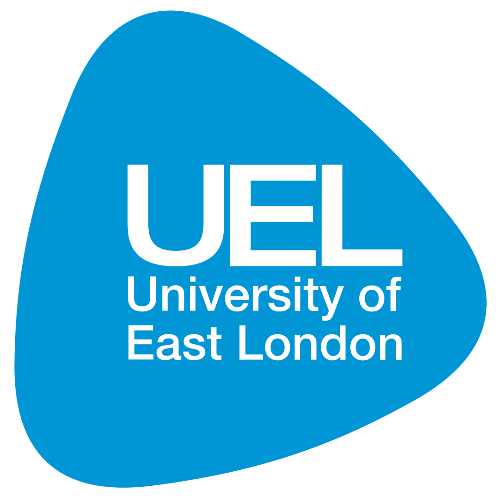







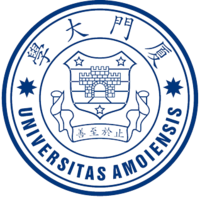


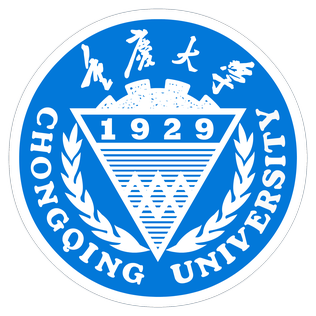
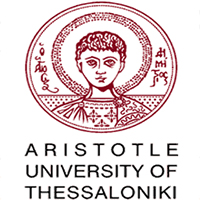
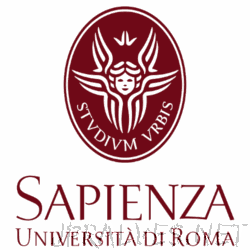
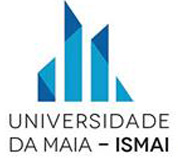


Subscribe to our newsletter
Join IEREK community